Download CAR-MEL
Transcript
CAR PART IV OPERATIONAL REGULATIONS Minimum Equipment List CAR-MEL UNCONTROLLED COPY WHEN DOWNLOADED Check with GCAA Website to verify current version before using FOREWORD 1. This CAR MEL has been revised taking into consideration the CRD of NPA 19-2014. This amendment shall enter into force on the 31st of January 2015. A transition period will be accepted up to 1st of June 2015 with regards to CAR MEL 009 (a) for initial MEL approvals and for amendments. 2. CAR MEL has been revised / renamed to remove the requirements of the MMEL as the GCAA at this point in time is not approving the MMEL but is accepting the approved MMEL from the State of Design. CAR MEL has been reformatted and amended where necessary to be in line with EASA requirements and to merge GCAA CAAP 48. 3. This CAR-MEL establishes MEL regulatory requirements and provides relevant information to the public. The previously published CAAP 48 - MMEL/MEL will become obsolete once this revision will enter into force. 4. Where there is a contradiction between MEL procedures in the organisation manuals such as OPS Manual and CAME contradict the procedures contained in the MEL Preamble, then the latter shall prevail. 5. For aircraft model first time registered in the UAE from 1st January 2006, the Type Acceptance includes acceptance of the MMEL. For models registered in the UAE prior to 1st January 2006, the MMEL for the Type Certificate based on which the UAE Certificate of Airworthiness is acceptable. 6. The MEL shall be based upon the manufacturer’s MMEL which has been approved by the State of Design and recognised by the GCAA. (e.g. Boeing MMEL approved by FAA, Airbus MMEL approved by EASA. Exception would be Embraer MMEL where the approval by the Brazilian Authority is not accepted by the GCAA and EASA’s approved MMEL is required.) Issue: Initial Rev. 00 Page 2 of 21 Issue Date: December 2014 Revision Date: December 2014 Abbreviations 1. AFM: Aircraft Flight Manual 2. AMO: Approved Maintenance Organisation 3. AWI: Airworthiness Inspector 4. BFE: Buyer Furnished Equipment 5. CARs: Civil Aviation Regulations 6. CDL: Configuration Deviation List 7. DDG: Dispatch Deviation Guide 8. DDPG: Dispatch Deviation Procedures Guide 9. ETOPS: Extended Range Twin Operations 10. FOI: Flight Operations Inspector 11. IFR: Instrument Flight Rules 12. IMC: Instrument Meteorological Conditions 13. MEL: Minimum Equipment List 14. MMEL: Master Minimum Equipment List 15. NEF: Nonessential Equipment and Furnishings 16. RI: Rectification Interval 17. RIE: Rectification Interval Extension 18. Seq: Sequence number 19. VFR: Visual Flight Rules 20. VMC: Visual Meteorological Conditions Issue: Initial Rev. 00 Page 3 of 21 Issue Date: December 2014 Revision Date: December 2014 TABLE OF CONTENTS CAR MEL 001 General ................................................................................................................. 5 GM1 to CAR MEL 001 (a) ................................................................................................................ 5 AMC1 to CAR MEL 001 (b) .............................................................................................................. 5 GM1 to CAR MEL 001 (b)................................................................................................................ 5 CAR MEL 003 Applicability .......................................................................................................... 5 GM1 to CAR MEL 003 (a) ................................................................................................................ 6 AMC1 to CAR MEL 003 (b) .............................................................................................................. 6 CAR MEL 005 GCAA Approval ..................................................................................................... 6 AMC1 to CAR MEL 005 (a) .............................................................................................................. 6 GM1 to CAR MEL 005 (a) ................................................................................................................ 7 AMC2 to CAR MEL 005 (a) .............................................................................................................. 7 GM1 to CAR MEL 005 (b) ................................................................................................................ 7 CAR MEL 007 Amendment of MEL ............................................................................................. 7 AMC1 to CAR MEL 007 ................................................................................................................... 7 GM1 to CAR MEL 007 ..................................................................................................................... 7 CAR MEL 009 Content................................................................................................................. 8 GM to CAR MEL 009 (a) .................................................................................................................. 8 GM1 to CAR MEL 009 ..................................................................................................................... 8 GM2 to CAR MEL 009 ..................................................................................................................... 8 GM3 to CAR MEL 009 ..................................................................................................................... 8 AMC1 to CAR MEL 009 (a) .............................................................................................................. 8 AMC2 to CAR MEL 009 (a) .............................................................................................................. 9 AMC3 to CAR MEL 009 (a) .............................................................................................................. 9 GM1 to CAR MEL 009 (a) ................................................................................................................ 9 GM1 to AMC1 to CAR MEL 009 (a) item (3) ................................................................................... 9 GM1 to AMC1 to CAR MEL 009 (a) item (7) ................................................................................. 10 CAR MEL 011 Rectification Intervals......................................................................................... 10 AMC1 to CAR MEL 011 ................................................................................................................. 12 CAR MEL 013 Rectification Interval Extension (RIE) ................................................................. 12 AMC1 to CAR MEL 013 (a) ............................................................................................................ 12 AMC2 to CAR MEL 13 (b) .............................................................................................................. 13 AMC2 to CAR MEL 013 (b) and (c) ................................................................................................ 13 GM1 to CAR MEL 013 ................................................................................................................... 13 CAR MEL 015 Operational and Maintenance (O) and (M) Procedures .................................... 13 AMC1 to CAR MEL 015 (a) ............................................................................................................ 14 GM1 to CAR MEL 015 (a) .............................................................................................................. 14 AMC1 to CAR MEL 015 (b) ............................................................................................................ 14 CAR MEL 016 Training .................................................................................................................. 14 GM1 to CAR MEL 016 ................................................................................................................... 14 CAR MEL 017 Operations Outside the Constraints of the MEL ................................................ 15 GM1 to CAR MEL 017 ................................................................................................................... 15 Appendix 1 Definitions .............................................................................................................. 16 Appendix 2 Sample of MEL Format ........................................................................................... 18 Appendix 3 Sample of MEL training syllabus ............................................................................. 19 Appendix 4 MEL OPERATIONS MANUAL AMMENDMENT GUIDE ............................................. 20 Issue: Initial Rev. 00 Page 4 of 21 Issue Date: December 2014 Revision Date: December 2014 CAR MEL 001 General (a) Unless permitted by the GCAA, an operator shall not operate an aircraft other than in accordance with the MEL. (b) Any such permission will not permit operation outside the constraints of the MMEL without a flight permit (c) Items required by the UAE Civil Aviation Regulation and which are not listed in the MMEL operative for dispatch. (d) Notwithstanding (a) and (b) above, under certain circumstances, the Pilot-In-Command may take immediate action to fly with inoperative equipment outside MEL constraints if he /she believe that leaving the aircraft on ground will likely jeopardise the aircraft and/ or its occupant’s safety. (e) When an item is discovered to be inoperative, it is reported by making an entry in the operator’s technical log. Following sufficient fault identification, the item is then either rectified or may be deferred following the MEL or other approved means of compliance acceptable to the GCAA prior to further operation. MEL conditions and limitations do not relieve the operator from determining that the aircraft is in a condition for safe operation with items inoperative. GM1 to CAR MEL 001 (a) The MEL is a document that lists the equipment that may be temporarily inoperative, subject to certain conditions, up to the commencement of flight. This document is prepared by the operator for his/their own particular aircraft taking account of their aircraft configuration and all those individual variables that cannot be addressed at MMEL level, such as operating environment, route structure, geographic location, aerodromes where spare parts and maintenance capabilities are available etc., in accordance with a procedure approved by the GCAA. AMC1 to CAR MEL 001 (b) The MEL cannot deviate from Airworthiness Directives, Safety Directives or any other additional mandatory requirements. Where there is a conflict between the MMEL or MEL and an Airworthiness Directive or any other Mandatory Requirement, it is the data or information contained in the Airworthiness Directive or the Mandatory Requirement (e.g. Continued Airworthiness requirement, AFM requirements) which overrides. GM1 to CAR MEL 001 (b) FAA approved MMELs require the operator to develop a Non-essential Equipment & Furnishing program (NEF). CAR MEL 003 Applicability (a) An Operator shall establish a Minimum Equipment List (MEL) for each aircraft as required by GCAA CAR-OPS 1.030 and GCAA CAR-OPS 3.030. This shall be based upon, but no less restrictive than, the relevant Master Minimum Equipment List (MMEL). (b) It shall also be applicable to Leased Foreign Registered Aircraft operating under GCAA AOC and Foreign Leased UAE Registered Aircraft. Issue: Initial Rev. 00 Page 5 of 21 Issue Date: December 2014 Revision Date: December 2014 GM1 to CAR MEL 003 (a) Approved MMELs may be acquired from the foreign Civil Aviation Authority. Alternatively, operators may obtain MMELs directly from the manufacturer which have been issued by applicable Civil Aviation Authority (e.g. EASA / FAA), who normally provide MMELs along with a revision service. It is the responsibility of the operator to provide a complete set of source MMEL documents to the UAE GCAA and also ensure a proper revision status. Relevant Master Minimum Equipment List (MMEL) is considered to be the MMEL accepted by the GCAA as per CAR 21 Subpart B1 and its AMC’s/GM’s. AMC1 to CAR MEL 003 (b) In case an aircraft is leased in from a third country operator or leased out to a third country operator, the MEL approval authority shall depend on the agreement between the GCAA and the NAA of the concerned third country. CAR MEL 005 GCAA Approval (a) (b) The MEL and any amendment shall be approved by the GCAA. The MEL and any amendment shall be submitted through the GCAA Q-Pulse system. (c) MEL items shall be in line with the limitations as per GCAA form GTF-MEL-003 (except where the MMEL is more restrictive). (d) On a case by case basis, the GCAA may approve operation without an MEL in exceptional circumstances such as newly designed, under validation aircraft or when not practically possible for the operator to have an approved MEL by the time its starts its operation, in which case there will be letter of No MMEL or MEL issued with the consequences that any unserviceability that any failure will result in AOG, this condition shall also be limited to 30 days during first entry of new aircraft which has not been certificated or validated in the UAE. AMC1 to CAR MEL 005 (a) The GCAA may grant the privilege of internal approval of certain MEL amendments to the operator. This privilege may be granted, after careful review of experience in operating the aircraft type, the compliance history with GCAA requirements, competencies, knowledge of personnel, including Post Holders and availability of resources and are based upon the operator’s defined procedures. This approval will be limited to the following amendments only: (a) Amendment of the MEL to incorporate MMEL Revisions (including Temporary Revisions) (except items that are “As per Regulations”) (b) Amendment of the MEL to incorporate MMEL Supplement (initial and revisions) introduced via STC, which is approved by GCAA (except items that are “As per Regulations”) (c) Amendment of the MEL to incorporate BFE equipment of a non-safety nature (except if the BFE is mandated by the UAE regulations) (d) Amendment to the MEL for correction of typographical errors. In any case the operator should submit the MEL (including its own internally approved amendments) to the GCAA for formal acceptance at intervals agreed with the GCAA. The MEL preamble should include these limitations. Issue: Initial Rev. 00 Page 6 of 21 Issue Date: December 2014 Revision Date: December 2014 GM1 to CAR MEL 005 (a) With the approval of the GCAA, the MEL may include specific provisions for particular types of operation carried out by the operator (e.g. crew training, positioning flights, demonstration flights etc.). AMC2 to CAR MEL 005 (a) A revised MEL is deemed to be in force upon receipt of approval from UAE GCAA. However, the operator has 10 calendar days or as specified in the operator's approved procedures, to distribute and implement the new document. In all cases, copies are required for: (a) Each aircraft; (b) Post holder -Maintenance; (c) Post holder -Operations; (d) GCAA electronic publications and data management through their FOI/ AWI. (e) Flight operations / Dispatch office; (f) Any other personnel as required; GM1 to CAR MEL 005 (b) The Q-Pulse user Manual can be found on the GCAA website under: http://www.gcaa.gov.ae/Resources/DataFiles/Pdf%20Files/GCAA%20QPulse%20User%20Manual.pdf?_eService=General CAR MEL 007 Amendment of MEL The Operator shall amend the MEL after any applicable change to the MMEL within 90 days. Following the embodiment of a modification (STC) having an impact on the MEL the operator shall amend the MEL in line with their defined procedures. AMC1 to CAR MEL 007 (a) The following are applicable changes to the MMEL that require amendment of the MEL: 1. A reduction of the rectification interval; 2. Change of an item, only when the change is applicable to the aircraft or type of operations and is more restrictive. (b) The amended MEL should be submitted to the GCAA at least 30 days prior of the implementation date required by the MMEL. GM1 to CAR MEL 007 Operators may disagree with the content of the MMEL and request changes to their MEL. These suggestions for changes, accompanied by appropriate substantiation, should be forwarded through their principal inspectors for assessment. During the evaluation the GCAA might approach the Issue: Initial Rev. 00 Page 7 of 21 Issue Date: December 2014 Revision Date: December 2014 foreign CAA (approving authority of the source MMEL) or the manufacturer for assistance and comments prior to making a decision. CAR MEL 009 Content The MEL shall be in an acceptable format and shall contain the following: (a) A Preamble, including guidance, organisational procedures and definitions for flight crew and maintenance personnel using the MEL. The procedures contained in the preamble shall have precedence over any other organisational procedures related to MEL usage and implementation. (b) The revision status of the MMEL upon which the MEL is based, the revision status of the MEL. (c) The scope, extent and purpose of the MEL. (d) Items that have been incorporated due to a major modification (STC) relevant to the MEL. GM to CAR MEL 009 (a) For further guidance please see Appendix 4. GM1 to CAR MEL 009 MEL format is at the discretion of the operator, provided that it is clear and unambiguous. However, it is recommended that the MEL page format follow the MMEL page format. (See Appendix 2 Sample of MEL format) (a) The page numbering and individual MEL items should be in accordance with the ATA 100 code system. (b) The MEL may incorporate only one item per page or as considered appropriate by the operator when operations and/or maintenance procedures are required. If no procedures are required, or the required action is simple, multiple items may appear on a single page. (c) The operational and maintenance procedures are normally located immediately below the inoperative item of equipment to reduce error in cross referencing. GM2 to CAR MEL 009 A List of Effective Pages (LEP) may be used to ensure that each MEL is up-to-date. It may list the date of the last amendment for each page of the MEL. The date and revision status of each page of the MEL should correspond to that shown on the List of Effective Pages. GM3 to CAR MEL 009 The Table of Contents page normally lists the section for each aircraft system utilising the ATA 100 listing as found in the MMEL. Pages will ideally be numbered with the ATA system number followed by the item number for that system (e.g., the page following 27-2-1 would be 27-2-2). AMC1 to CAR MEL 009 (a) With effect from 1st January 2015, any application for MEL initial or revision approval submitted to the GCAA should include the following organisational procedures in the preamble of the MEL: 1. Procedures related to RI and RIE’s. Issue: Initial Rev. 00 Page 8 of 21 Issue Date: December 2014 Revision Date: December 2014 2. Procedures for the operation of an aircraft outside the constraints of the MEL but within the constraints of the MMEL and within the GCAA regulatory requirements. 3. Placarding procedures. 4. Operational and Maintenance procedures 5. Procedures related to internal approval of the MEL 6. Procedures related to the NEF program (for FAA approved MMEL’s) 7. Non Safety related equipment procedure. AMC2 to CAR MEL 009 (a) The operator should ensure that the MEL, including the Preamble, reflects the guidance given in the MMEL on the effects of Multiple Inoperative Items. AMC3 to CAR MEL 009 (a) The operator should include guidance in the MEL on how to deal with any failures that occur between the commencement of the flight and the start of the take-off. If a failure occurs between the commencement of the flight and the start of the take-off, any decision to continue the flight should be subject to pilot judgment and good airmanship. The pilot-in-command/commander may refer to the MEL before any decision to continue the flight is taken. GM1 to CAR MEL 009 (a) The purpose of the Minimum Equipment List Preamble is to provide direction to company personnel on the philosophy and use of the MEL. GM1 to AMC1 to CAR MEL 009 (a) item (3) Placarding will be carried out in accordance with the placarding procedures established and set out in the preamble of the MEL. The operator should provide the capability and instructions to the flight/maintenance crew to ensure that the placard(s) is (are) in place prior to the aircraft being dispatched, in order to inform crew members of the equipment condition. It should also ensure that the placard(s) is (are) removed and accounted for once the defect has been rectified. To the extent practicable, placards should be located as indicated in the MEL or adjacent to the control or indicator affected and should be self-adhesive. While the MEL for some items may require specific wording, the majority of items leave the placard wording and location to be determined by the operator. The placard may be in two parts. Part One lists a description of the defect and the defect control number and is attached to the log book for crew reference. Part Two lists the system affected and the defect control number and is fixed in the appropriate location. A MEL control sheet attached to the log book could serve the same purpose as Part One above. If a defect occurs at a base where maintenance personnel are not available, the flight or cabin crew may install a temporary placard as required by the MEL. The aircraft may continue on a planned itinerary to a base where maintenance will rectify or re-defer in accordance with the approved Issue: Initial Rev. 00 Page 9 of 21 Issue Date: December 2014 Revision Date: December 2014 deferral system. The exclusion of an asterisk in a MMEL does not preclude the requirement for placarding. GM1 to AMC1 to CAR MEL 009 (a) item (7) (a) Most aircraft are designed and certified with a significant amount of equipment redundancy, such that the airworthiness requirements are satisfied by a substantial margin. In addition, aircraft are generally fitted with equipment that is not required for safe operation under all operating conditions, e.g. instrument lighting in day VMC. (b) All items related to the airworthiness, or required for the safe operation, of the aircraft and not included in the list are automatically required to be operative. (c) Equipment, such as entertainment systems or galley equipment may be installed for passenger convenience. If this non-safety related equipment does not affect the airworthiness or operation of the aircraft when inoperative, it does not require a rectification interval, and need not be listed in the operator's MEL, if it is not addressed in the MMEL. The exceptions to this are as follows: 1. Where non-safety related equipment serves a second function, such as movie equipment being used for cabin safety briefings, operators should develop and include operational contingency procedures in the MEL in case of an equipment malfunction. 2. Where non-safety related equipment is part of another aircraft system, for example the electrical system, procedures should be developed and included in the MEL for deactivating and securing in case of malfunction. In these cases, the item should be listed in the MEL, with compensating provisions and deactivation instructions if applicable. The rectification interval will be dependent on the secondary function of the item and the extent of its effect on other systems. (d) If the operator chooses to list non-safety related equipment in the MEL, not listed in the MMEL, they should include a rectification interval category. These items may be given a ‘D’ category rectification interval provided any applicable (M) procedure (in the case of electrically supplied items) is applied. (e) Operators should establish an effective decision making process for failures that are not listed in the MEL to determine if they are related to airworthiness and required for safe operation. In order for inoperative installed equipment to be considered non-safety related, the following criteria should be considered: 1. The operation of the aircraft is not adversely affected such that standard operating procedures related to ground personnel, and crew members are impeded; 2. The condition of the aircraft is not adversely affected such that the safety of passengers and/or personnel is jeopardised; 3. The condition of the aircraft is configured to minimise the probability of a subsequent failure that may cause injury to passengers / personnel and/or cause damage to the aircraft; 4. The condition does not include the use of required emergency equipment and does not impact emergency procedures such that personnel could not perform them. CAR MEL 011 Rectification Intervals The Operator shall: Issue: Initial Rev. 00 Page 10 of 21 Issue Date: December 2014 Revision Date: December 2014 (a) Establish rectification intervals for each inoperative instrument, item of equipment or function listed in the MEL. The rectification interval in the MEL shall not be less restrictive than the corresponding rectification interval in the MMEL. 1. The following categories shall be used unless otherwise specified in the MMEL: Category A No standard interval is specified; however, items in this category shall be rectified in accordance with the conditions stated in the MMEL. (i) Where a time period is specified in days, the interval excludes the day of discovery. (ii) Where a time period is specified other than in days, it shall start at the point when the defect is deferred in accordance with the operator’s approved MEL. Category B Items in this category shall be rectified within three (3) calendar days, excluding the day of discovery. Category C Items in this category shall be rectified within ten (10) calendar days, excluding the day of discovery. Category D Items in this category shall be rectified within hundred twenty (120) calendar days, excluding the day of discovery. Items in this category meet the following criteria: (i) the absence of the item does not adversely affect crew workload; (ii) the crew do not rely on the function of that item on a routine or continuous basis; and (iii) the crew’s training, subsequent habit patterns and procedures do not rely on the use of that item. (b) Establish an effective rectification programme. (c) Only operate the aircraft after expiry of the rectification interval specified in the MEL when: 1. the defect has been rectified; or 2. the rectification interval has been extended in accordance with CAR MEL 013. Issue: Initial Rev. 00 Page 11 of 21 Issue Date: December 2014 Revision Date: December 2014 AMC1 to CAR MEL 011 The operator should establish procedures whereby it periodically reviews the deferred items, in order to ensure that any accumulation of deferred items neither conflict with each other nor present an unacceptable increase in flight or cabin crew workload. Notwithstanding the categorisation of item repair intervals, it should be the aim of each MEL document holder to ensure that inoperative items are repaired as quickly as possible. The operator should also specify the time zone which will be used for the calculation of Repair Intervals to begin and expire. CAR MEL 013 (a) Rectification Interval Extension (RIE) Subject to procedures approved by the GCAA, the operator may internally approve one time extension of category B, C and D rectification intervals, provided that: 1. the extension of the rectification interval is, as a maximum, of the same duration as the rectification interval specified in the MEL; 2. the rectification interval extension is not used as a normal means of conducting MEL item rectification and is used only when events beyond the control of the operator have precluded rectification; 3. a description of specific duties and responsibilities for controlling extensions is established by the operator; 5. the GCAA is notified of any extension of the applicable rectification interval; 6. a plan to accomplish the rectification at the earliest opportunity is established; and (b) in cases where the operator does not hold internal RIE approval privileges, the operator may apply for an extension of category B, C and D rectification intervals to the GCAA. (c) Operators shall approach the GCAA for an approval of a second extension of CAT B, C and D where the privilege given under CAR MEL 013 (a) have been exercised or an approval has been obtained for a first RIE approval under CAR MEL 013 (b). AMC1 to CAR MEL 013 (a) (a) The operator’s procedures to address the extension of rectification intervals and on-going surveillance to ensure compliance should provide GCAA with details of the position of the nominated personnel responsible for the control of the operator’s Rectification Interval Extension (RIE) procedures and details of the specific duties and responsibilities established to control the use of RIEs. These procedures should be included in the MEL preamble. (b) Personnel authorising RIEs should be adequately trained in technical and/or operational disciplines to accomplish their duties. They should have necessary operational knowledge in terms of operational use of the MEL as alleviating documents by flight crew and maintenance personnel and engineering competence. (c) The operator should notify the GCAA within 1 month of the extension of the applicable rectification interval or within the appropriated timescales specified by the approved procedure for the RIE. Issue: Initial Rev. 00 Page 12 of 21 Issue Date: December 2014 Revision Date: December 2014 (d) The notification should specify the original defect, all such uses, the reason for the RIE and the reasons why rectification was not carried out within the original rectification interval. (e) The GCAA may decide not to grant internal RIE approval privilege to a particular operator, if in the view of the GCAA, the operator is not fit to exercise such a privilege. (f) For all internally approved extensions the operator should record the information in an acceptable format. A copy of the completed document should accompany the tech log entry as follows: “this aircraft is operating on a MEL item repair interval extension as specified in the attached document”. (g) A copy of the completed form (or the equivalent document) should be retained on file by the operator for a period of thirty-six months, for auditing purposes. A review may result in changes to the period of the extension, or may be used to determine abuse of the process. AMC2 to CAR MEL 13 (b) For all extensions that need GCAA approval, the operator should complete the GCAA RIE Form (GTFMEL-002). A copy of the completed and GCAA approved form should accompany the tech log entry as follows: “this aircraft is operating on a MEL item repair interval extension as specified in the attached RIE form”. A copy of the completed and GCAA approved form should be retained on file by the operator for a period of thirty-six months, for auditing purposes. AMC2 to CAR MEL 013 (b) and (c) The application to the GCAA should be done using GCAA Form GTF-MEL-002 and should include all required information. GM1 to CAR MEL 013 Procedures for the extension of rectification intervals are meant to be applied under certain conditions, such as a shortage of parts from manufacturers or other unforeseen situations (e.g. inability to obtain equipment necessary for proper troubleshooting and repair), in which case the operator may be unable to comply with the specified rectification intervals. CAR MEL 015 Operational and Maintenance (O) and (M) Procedures (a) The operator shall establish the operational and maintenance procedures in the MEL taking into account the operational and maintenance procedures referenced in the MMEL. (b) The operator shall amend the operational and maintenance procedures referenced in the MEL after any applicable change to the operational and maintenance procedures referenced in the MMEL. (c) Unless otherwise specified in the MEL, the operator shall complete: 1. the operational procedures referenced in the MEL when planning for and/or operating with the listed item inoperative; and Issue: Initial Rev. 00 Page 13 of 21 Issue Date: December 2014 Revision Date: December 2014 2. the maintenance procedures referenced in the MEL prior to operating with the listed item inoperative. AMC1 to CAR MEL 015 (a) (a) Any item in the MEL requiring an operational or maintenance procedure to ensure an acceptable level of safety should be so identified in the ‘remarks’ or ’exceptions’ column/part/section of the MEL. This will normally be ‘(O)’ for an operational procedure, or ’(M)’ for a maintenance procedure. ‘(O)(M)’ means both operational and maintenance procedures are required. (b) The satisfactory accomplishment of all procedures is the responsibility of the operator. GM1 to CAR MEL 015 (a) (a) Operational and maintenance procedures are an integral part of the compensating conditions needed to maintain an acceptable level of safety, enabling the competent authority to approve the MEL. The GCAA may request presentation of fully developed (O) and/or (M) procedures in the course of the MEL approval process. (b) Normally, operational procedures are accomplished by the flight crew; however, other personnel may be qualified and authorised to perform certain functions. (c) Normally, maintenance procedures are accomplished by the maintenance personnel; however, other personnel may be qualified and authorised to perform certain functions. (d) Unless specifically permitted by a maintenance procedure, an inoperative item may not be removed from the aircraft. AMC1 to CAR MEL 015 (b) Changes to the operational and maintenance procedures referenced in the MMEL are considered applicable and require the amendment of the maintenance and operating procedures referenced in the MEL when the: (a) modified procedure is applicable to the operator’s MEL; and (b) purpose of this change is to improve compliance with the intent of the associated MMEL dispatch condition. CAR MEL 016 Training Operators shall ensure that personnel engaged in any MEL related tasks have appropriate knowledge and have received relevant training on how to handle MEL related tasks. GM1 to CAR MEL 016 Appendix 3 Sample of MEL training syllabus gives guidance of typical training syllabus. “Personnel engaged” means crew members, dispatchers, maintenance engineers etc. Issue: Initial Rev. 00 Page 14 of 21 Issue Date: December 2014 Revision Date: December 2014 CAR MEL 017 Operations Outside the Constraints of the MEL Subject to a specific case-by-case approval by the GCAA, the operator may operate an aircraft with inoperative instruments, items of equipment or functions outside the constraints of the MEL but within the constraints of the MMEL, and within the GCAA regulatory requirements provided that: (a) the concerned instruments, items of equipment or functions are within the scope of the MMEL. (b) the approval is not used as a normal means of conducting operations outside the constraints of the approved MEL and is used only when events beyond the control of the operator have precluded the MEL compliance; (c) a description of specific duties and responsibilities for controlling the operation of the aircraft under such approval is established by the operator; and (d) a plan to rectify the inoperative instruments, items of equipment or functions or to return operating the aircraft under the MEL constraints at the earliest opportunity is established. GM1 to CAR MEL 017 Procedures for the operation of an aircraft outside the constraints of the MEL but within the constraints of the MMEL and within the GCAA regulatory requirements are meant to be applied under certain conditions, such as a shortage of parts from manufacturers or other unforeseen situations (e.g. inability to obtain equipment necessary for proper troubleshooting and repair), in which case the operator may be unable to comply with the constraints specified in the MEL. Issue: Initial Rev. 00 Page 15 of 21 Issue Date: December 2014 Revision Date: December 2014 Appendix 1 Definitions Definitions for the purpose of this MEL: ‘Alternate procedures are established and used’ or similar statement, shall be taken to mean that alternate procedures (if applicable) to the affected process must be drawn up by the operator as part of the MEL approval process, so that they have been established before the MEL document has been approved. Such alternate procedures are normally included in the associated operations (O) procedure. ‘Any in excess of those required by regulations’ means that the item required by applicable legislation (e.g. Regulation Air Operations, Single European Sky legislation or applicable airspace requirements) must be operative and only excess equipment may be inoperative. When the item is not required, it may be inoperative for the time specified by its rectification interval category. Whenever this condition is used in the MMEL, the applicable regulations for the intended routes and the resulting dispatching restrictions need to be clarified at operator’s MEL level. ‘Calendar day’: a 24-hour period from midnight to midnight based on either UTC or local time, as selected by the operator. All calendar days are considered to run consecutively. ‘Commencement of flight’ is the point when an aircraft begins to move under its own power for the purpose of preparing for take-off. ‘Considered inoperative’, as used in the dispatch conditions, means that the item must be treated for dispatch, taxi and flight purposes as though it were inoperative. The item shall not be used or operated until the original deferred item is repaired. Additional actions include: documenting the item on the dispatch release (if applicable), placarding, and complying with all remarks, exceptions, and related MMEL provisions, including any (M) and (O) procedures and observing the rectification interval. ‘Daylight’ corresponds to the period between the beginning of morning civil twilight and the end of evening civil twilight relevant to the local aeronautical airspace; or such other period, as may be prescribed by the appropriate authority. ‘Day of discovery’ means the calendar day that a malfunction was recorded in the aircraft maintenance record/logbook. ‘Deactivated and secured’ means that the specified item must be put into an acceptable condition for safe flight. ‘Item’ means equipment, system, component or function. ‘Icing conditions’ means an atmospheric environment that may cause ice to form on the aircraft or in the engine(s) as defined in the AFM. In the absence of any AFM limitations, icing conditions should be taken as visible moisture or precipitation, when the OAT is less than +5°C. ‘If installed’ means that the item is either optional or is not required to be installed on all aircrafts covered by the MMEL/MEL. ‘Inoperative’ means that the item does not accomplish its intended purpose or is not consistently functioning within its approved operating limits or tolerances. Issue: Initial Rev. 00 Page 16 of 21 Issue Date: December 2014 Revision Date: December 2014 ‘Is not used’ in the dispatch conditions, remarks or exceptions for an MMEL item may specify that another item relieved in the MMEL ‘is not used’. In such cases, crew members should not activate, actuate, or otherwise utilize that item under normal operations. It is not necessary for the operators to accomplish the (M) procedures associated with the item. However, operationsrelated provisions, (O) procedures and rectification interval must be complied with. An additional placard must be affixed, to the extent practical, adjacent to the control or indicator for the item that is not used to inform crew members that an item is not to be used under normal operations. ‘Master Minimum Equipment List (MMEL)’ means a document approved by the Authority of the State of Design that establishes the aircraft items allowed to be inoperative under conditions specified therein for a specific type of aircraft. ‘Minimum Equipment List (MEL)’ means a document approved by the GCAA that authorises an operator to dispatch an aircraft with items inoperative under the conditions specified therein. ‘Visible moisture’ means an atmospheric environment containing water in any form that can be seen in natural or artificial light; for example, clouds, fog, rain, sleet, hail, or snow. Issue: Initial Rev. 00 Page 17 of 21 Issue Date: December 2014 Revision Date: December 2014 Appendix 2 Sample of MEL Format (See also next table) as another alternative format AIRCRAFT MODEL 1. : Boeing MINIMUM EQUIPMENT LIST COMPANY NAME or LOGO : B717-200 SYSTEM & SEQUENCE NUMBER ITEM 21 AIR CONDITIONING 21.8 Air Conditioning Pressure Regulator Valves PLACARD : As APPROPRIATE REPAIR INTERVAL 2. NUMBER INSTALLED 3. NUMBER REQUIRED FOR DISPATCH MAINTENANCE OPERATIONS 4. REMARKS / EXCEPTIONS C 2 1 M O MAINTENANCE (M) 1. Dispatch with one Air Conditioning Pilot Pressure Regulators Valve inoperative: A. Select affected AIR CONDITIONING SUPPLY switch to OFF. B. Placard switch appropriately so as to prevent its use. OPERATIONS (O) 1. Dispatch with one or both Air Conditioning Pilot Pressure Regulator Valves inoperative Not Installed 21.9 Air Conditioning Pressure Regulator warning Sample 2 MEL Format Alternate format (Company's Name or Logo) MINIMUM EQUIPMENT LIST PAGE Boeing B797 Series :100/300 1.ATA System and Sequence Number Amendment: 4 DATE: 01 Apr 95 2. NUMBER INSTALLED 3. NUMBER REQUIRED 21-3-1 21. Air Conditioning 4. REMARKS OR EXCEPTIONS 21-3 Equipment Cooling Fan (wardrobe) D 1 0 (M) May be inoperative provided the equipment cooling fan is deactivated. Alternate format may be acceptable with separate Maintenance and operations procedures in a single document. Both Format shall include Maintenance and operating procedures or may refer to another operating procedures within the manual, except when the procedures is exceptionally lengthy and time consuming that require maintenance document in separate control. Issue: Initial Rev. 00 Page 18 of 21 Issue Date: December 2014 Revision Date: December 2014 Appendix 3 Sample of MEL training syllabus Note: For all work carried out by crew members, this practice needs to be addressed in the MEL training syllabus in the MEL Preamble, including the particular items approved. 1.1 MEL Origin and Philosophy (a) MMEL background and development. (b) MEL background and development. 1.2 General MEL Content (a) Approval Letter (b) List of effective pages (c) Table of contents (d) Preamble (e) Definitions (f) ATA Chapters, Page format, Page numbering, System and item titles, categorization, columns, remarks and exceptions, placarding, (O) and (M) procedures. 1.3 Specific Use of the MEL (a) A review of items from a variety of systems including those with no procedures, (O), (M), (O) and (M), as applicable. (b) Practical demonstration of MEL use versus hypothetical situations at and away from a maintenance base. (c) Supervised 'hands on' use of a MEL, until familiar with the location, contents and procedures, including those at or away from a maintenance base. (d) Specific procedures for pilot to dispatch under MEL without engineer release. (e) Repair Interval Extension. 1.4 Examination (a) 1.5 A written or practical test to ensure that the training has been adequate. Company Forms Adequate company records must be developed to document MEL training to be added to the employee's training records. If the aircrew is to exercise elementary maintenance privileges, training forms must include an area describing what is being certified, and a place for sign off by an AME. Issue: Initial Rev. 00 Page 19 of 21 Issue Date: December 2014 Revision Date: December 2014 Appendix 4 MEL OPERATIONS MANUAL AMMENDMENT GUIDE Defect Deferral Recommended Procedures Disclaimer This sample is provided to operators as a means of defect control. It is not intended to be used as a guide or checklist for those air operators who have existing procedures that currently meet the intent of regulatory requirements. The procedures developed below are specifically for a Company Operations Manual. These procedures should be identical to those found in the operators exposition and should also be include in the MEL Preamble. MEL DEFECT DEFERRAL PROCEDURES NOTE: Use of this MEL may not guarantee compliance with Regulations outside of UAE nor other procedures such as; Company Operation Specifications, ETOPs, RVSM, CAT II/III, etc. 1.1 Defects and their control -General a) All defects will be entered in the aircraft Log. (If applicable interior cosmetic defects may be entered in a Cabin Defect Log Book.) b) Prior to flight all defects shall be actioned and certified or deferred in accordance with the procedures set forth in the Company Operations Manual (COM), CAMO and Minimum Equipment List (MEL). c) For each aircraft a defect will have a unique number assigned to it for tracking purposes. 1.2 Deferred Defect Restrictions a) Any defect may be deferred provided it is included in the approved MEL and the aircraft must be operated in accordance with any conditions or limitations specified therein. b) Where the conditions or limitations specified in a MEL are in conflict with the requirements of an airworthiness directive, the airworthiness directive prevails. c) If any doubt exists as to the deferral of an item, consultation between operations and maintenance is required. d) Once a defect has been established as being deferrable the following procedures will be used. 1.3 Deferring Procedures and Control -Maintenance If a defect has been deferred by the flight crew re-defer in accordance with the following. a) The defect will be entered in the Aircraft Log as "deferred in accordance with MELATA #..." and signed by a qualified AME. b) A placard will be placed in the aircraft as described by the MEL. c) The Aircraft Log must be checked to ensure that when operating with multiple inoperative items, d) The interrelationship between those items and the effect on aircraft operation and crew workload will be considered. e) The deferral will be tracked by Quality Assurance to ensure a timely rectification with regard to the categorisation. f) After defect rectification, remove the placard from the aircraft and i. Follow the procedures in the CAMO for placarding control. Or Issue: Initial Rev. 00 Page 20 of 21 Issue Date: December 2014 Revision Date: December 2014 ii. For multiple copy Aircraft Log, afix the placard to the maintenance copy of the defect rectification. Or iii. For single copy bound type Aircraft Log, afix the placard adjacent the maintenance rectification. g) It is mandatory that all defects not cleared when the Aircraft Log expires be transferred to the new Aircraft Log with all details. 1.4 Use of MEL -Flight Crew Once a defect has been established as being deferrable the Pilot-in-Command (PIC) may defer the defect in accordance with the MEL providing the following procedures are adhered to: a) The Pilot-in-Command will enter the defect in the Aircraft Log. b) The Pilot-in-Command will advise the Maintenance department as soon as practicable. c) Where required the flight crew will adhere to all column 4 restrictions and perform (O) procedures as applicable. d) (M) Maintenance Procedures may be actioned and deferred by Flight Crews who have been trained to do so under the authority of "Elementary Work". e) Flight Crews may not perform Maintenance procedures if the defect involves an item which requires maintenance personnel. The aircraft may not proceed until maintenance is carried out. f) The Aircraft Log must be checked by the Pilot-in-Command for multiple inoperative items. The interrelationship between those items and the resultant effect on aircraft operation and crew workload will be considered by the PIC before making a go / nogo decision. g) Appropriate placard(s) will be installed by the flight crew in accordance with the instructions in the MEL. h) The Pilot-in-Command will enter in the Aircraft Log, adjacent to the defect, under what authority the defect has been deferred i.e. “deferred in accordance with MEL ATA Number...”, the time of day, his/her signature and pilot’s licence number. i) If any doubt exists, this does not preclude the pilot from consulting maintenance to confirm that the ATA item and procedure has been deferred correctly prior to subsequent dispatch. j) The aircraft may proceed on a planned itinerary to a base where maintenance will rectify or re-defer the defect in accordance with their defined procedures. 1.5 Aircraft Log Book Procedures "O" and "M" Procedures PRIOR TO EACH DEPARTURE: Where an "O" and/or "M" Procedure is required PRIOR TO EACH DEPARTURE, the Pilot-in-Command will ensure all required actions are completed in accordance with the MEL. PRIOR TO EACH FLIGHT DAY: Where an "O" and/or "M" Procedure is required PRIOR TO EACH FLIGHT DAY, the Pilot-in-Command will ensure all required actions are completed in accordance with the MEL. Issue: Initial Rev. 00 Page 21 of 21 Issue Date: December 2014 Revision Date: December 2014





















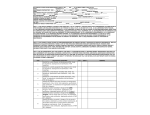
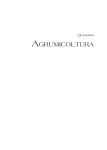
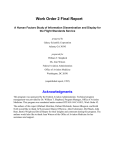
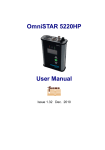
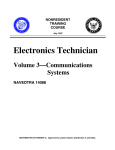
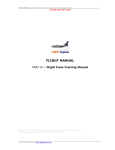
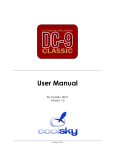

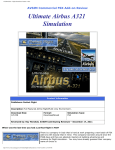



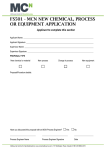

![[color=orange]THIS IS A GUIDE ON REPLACING CAPACITORS IN](http://vs1.manualzilla.com/store/data/007379770_1-0cd8feb544c0f47df80b77b27322076c-150x150.png)
